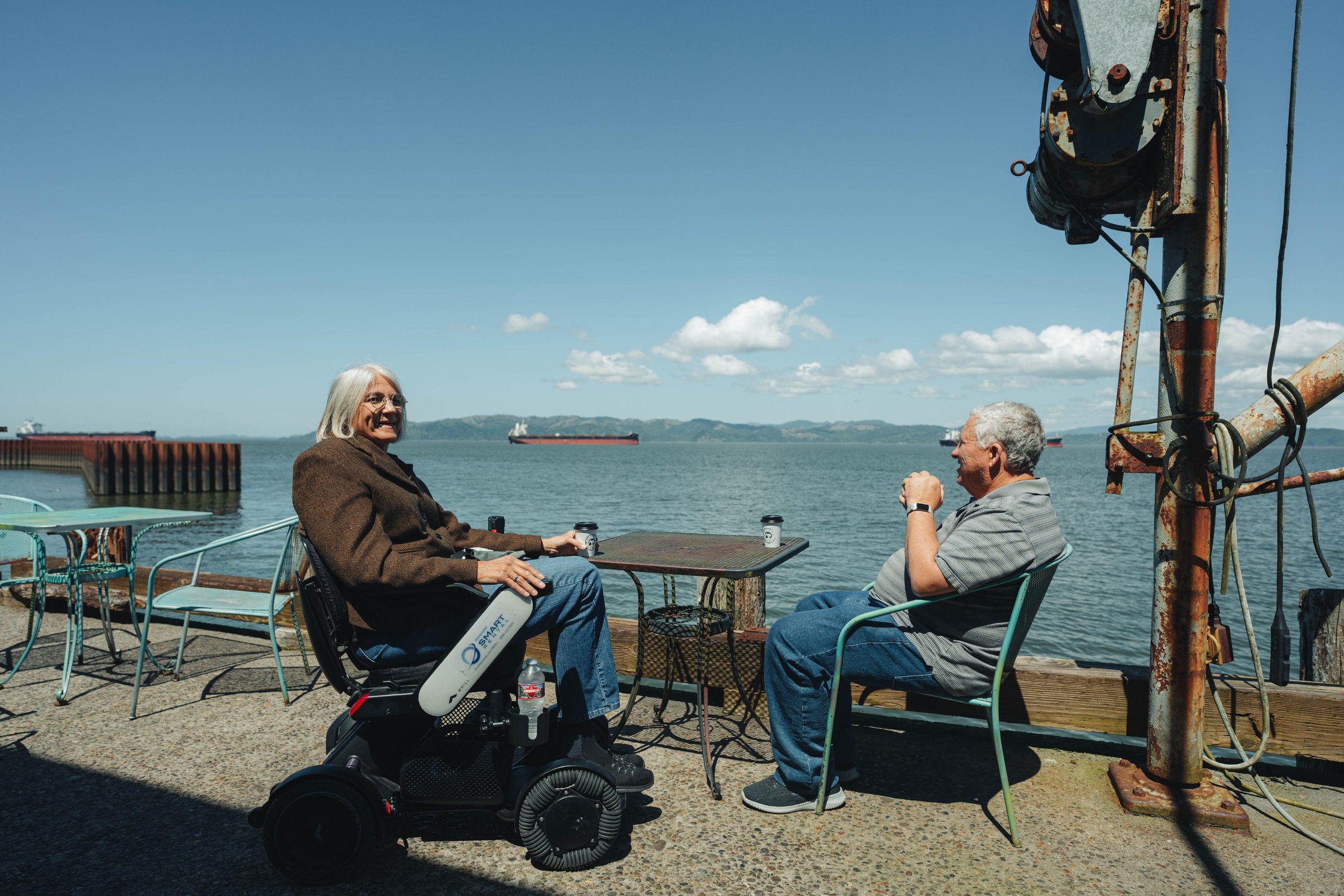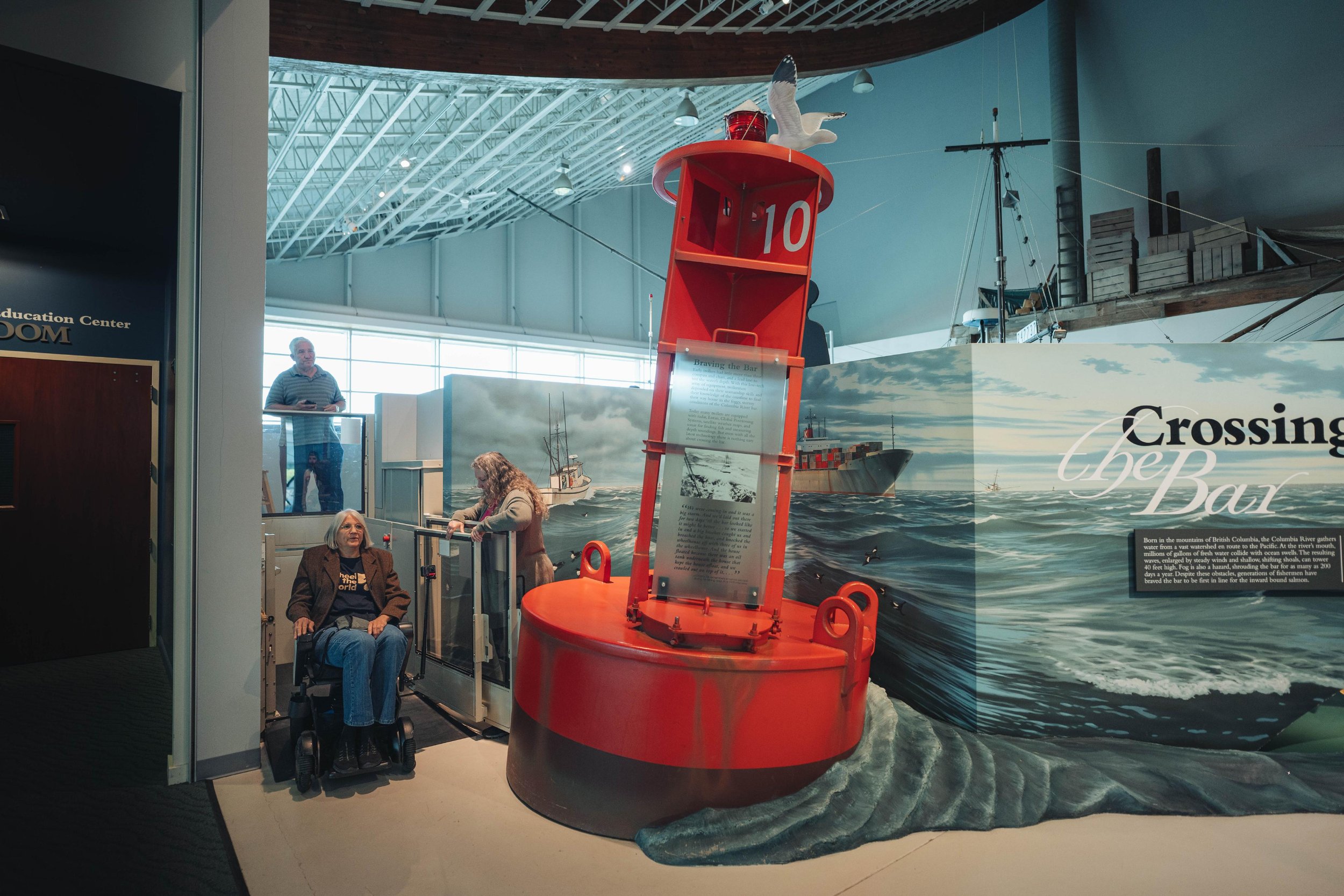Accessible Sustainable Travel: Breaking Barriers, Meeting Global Demand
Photo credit: Wheel the World
At GLP Films, we frequently emphasize the need for sustainable, responsible travel—and we’re not alone. Sustainable travel is becoming a major trend. 90% of consumers actively seek more sustainable options while traveling. According to Expedia Group’s 2022 Global Impact Report and Booking.com’s 2022 Sustainable Travel Report, 7 in 10 travelers even avoided destinations or services they didn’t perceive as sustainable.
What’s more, travelers of all ages and abilities are not only eager to travel sustainably but also to journey together as multi-generational families.
This is fantastic news! However, to tackle major issues like climate change, environmental degradation, and over-tourism, we must take stronger action. We need all hands on deck, which is impossible if not everyone has access to travel.
The need to offer more inclusive, sustainable, and accessible travel is more important than ever before. Here are some key statistics:
The accessible travel market is large, growing, and diverse
In the U.S., 1 in 6 people lives with a significant disability. Globally, around 1.3 billion people, or 16% of the population, experience significant disabilities (WHO). As the baby boomer generation—currently the second-largest generation—continues to age, this number is expected to rise significantly.
It’s important to recognize that people with disabilities have diverse needs. These range from mobility, hearing, and vision impairments to cognitive and sensory challenges, many of which are invisible.
The accessible travel market is untapped and underserved
According to the 2020 Open Doors Organization Market Study, 70% of disabled people have taken at least one trip. Disabled travelers spent $58 billion in the U.S. market alone, a 339% increase since 2015 (2020 Open Doors Organization Market Study).
Photo credit (image below): Wheel the World
The accessible travel market represents an incredible opportunity for the tourism industry to welcome new visitors
Disabled people are traveling, and more would if they could find accessible travel options. Investing in accessible travel is both the right choice and a huge growth opportunity for destinations and businesses.
Thankfully, the travel industry is increasingly recognizing the demand for accessible travel options and is improving services for disabled travelers. This includes better accessible transportation, tours, airport assistance, lodging, and information about accessibility services. While we are encouraged that this long-overlooked sector is gaining the mainstream recognition and the attention it deserves, we also acknowledge that significant work remains to be done.
Beyond making infrastructure changes, destinations also need to provide accurate, timely, specific information about accessibility in their destination so travelers can plan a trip that meets their individual needs. And then, they need to communicate that information widely.
At GLP Films, we are committed to raising awareness about accessible travel options. We recognize the importance of inclusive tourism and believe everyone deserves the opportunity to experience the most awe-inspiring corners of the world.
Travel not only inspires individuals but also encourages them to pursue their passions for preserving our planet. That’s why we are excited to collaborate with the Oregon Coast Visitors Association (OCVA) on a new campaign. This initiative focuses on the intersection of sustainable tourism, inclusion, and accessibility, highlighting their role in supporting climate solutions.
OCVA champions the shift to sustainable and accessible travel and represents an excellent case study for other destinations to follow suit. GLP Films interviewed OCVA’s Deputy Director, Arica Sears, and Communications Director, Karen Olson, to explore their efforts in promoting accessible travel. They shared insights on the benefits of accessible travel for their destination and community. Here is what we learned:
“GLP Films will play a vital role in our campaign by leveraging their expertise in impactful storytelling to highlight the Oregon Coast’s commitment to sustainability, accessibility, and tourism. Through compelling narratives and visually engaging content, GLP Films will help us reach a broader audience, showcasing the region’s dedication to preserving its natural beauty while ensuring that it remains accessible to all.
The Oregon Coast is fondly called “The People’s Coast,” thanks to Oregon’s unique law that ensures the entire coast is open to the public forever.”
Why OCVA is working to promote more sustainable, accessible travel:
Travelers are hungry for information that will help them plan a sustainable and accessible trip and OCVA is deeply committed to making the coast a sustainable tourism destination. Following the guidance of our 2022 MAR Plan, we have worked to roll out several projects that make it possible for our visitors to travel more sustainably and support organizations doing important climate mitigation, adaptation, and resiliency work on the coast.
In addition, travelers with disabilities also want to plan a trip that will be accessible for them. OCVA and its partners are working together toward greater accessibility. 1 in 6 visitors to the Oregon Coast has a disability, according to the 2022 Oregon Visitor Profile. The size and growth of this market represent an incredible opportunity for the tourism industry to welcome new visitors.
What are some of the benefits of providing accessible travel options and communication?
The destination will become more welcoming to all travelers, including those with disabilities and their traveling companions. It will attract visitors who want to minimize negative impacts and contribute positively to the well-being of the destination as they travel.
The DMO will be able to market its destination to travelers with disabilities, competing for a significant amount of travel spending for those with disabilities. The DMO will be better able to attract visitors looking to plan a sustainable trip who are likely to travel with a lighter footprint and be motivated to give back to the destination.
Visitors will be able to find needed information to plan a sustainable, accessible trip. They will feel confident in making travel plans to the destination knowing their needs will be met and they will be able to travel in alignment with their values.
Community members will be able to enjoy infrastructure and amenities that make the destination more inclusive. A destination that is welcoming and accessible to all people and focuses on mitigating environmental impacts will benefit those who live and work there.
What are some examples of things you are doing to make travel more accessible along the coast?
Regional efforts include Mobi-Mats and David’s Chair all-terrain track wheelchairs for beach access, hearing loop-enabled and sensory-friendly museums and attractions, and Wheel the World assessments of lodging and dining options. We have also worked to provide inclusive and accessible parks, playgrounds, trails, boat launches, fishing piers, beaches, boardwalks, and other outdoor spaces. For communications, we are providing itineraries for low or slow mobility, and diverse marketing content that highlights options for accessible travel and features disabled travelers.
What goals you are hoping to achieve by partnering with GLP Films on this new campaign?
Equitable Access: The project aims to ensure equitable access to the natural beauty and resources of the Oregon Coast. By showcasing the work being done to make the destination more accessible, it sends a clear message that the Oregon Coast is an inclusive place where everyone, including visitors with disabilities, is welcome to enjoy the experience.
Awareness and Education: The video content will serve as an educational resource for visitors, highlighting the efforts made to improve accessibility. It will raise awareness among travelers, including those with disabilities, about the accessible amenities and accommodations available in the region, such as David's Chair and Mobi-Mats for beach access.
Inspiration: The inspiring stories featured in the videos will not only educate but also inspire visitors, including those with disabilities, to explore the Oregon Coast. These stories will demonstrate that people of all backgrounds and abilities can enjoy the destination and its natural beauty.
Inclusivity: By centering diverse voices, including those of local stewards and visitors, the campaign reinforces the message of inclusivity. Visitors with disabilities will see themselves represented in the stories, further encouraging them to consider the Oregon Coast as a viable and welcoming travel destination.
Community Livability: The project's end goal of reducing visitation pressures and increasing community livability directly benefits visitors with disabilities. A more sustainable and accessible tourism model can lead to a more enjoyable and less crowded experience for all travelers, including those with mobility needs.
Climate Impact Mitigation: The mention of OCVA's Travel Impact Calculator underscores the commitment to sustainability. This aspect benefits not only visitors with disabilities but also environmentally conscious travelers who can make informed choices to reduce their carbon footprint.
Photo credits: L-R: Wheel the World, Sophia Knox, Overleaf Lodge & Spa / Fireside Motel, and Dreshad Williams.
What's your message to other destinations starting their journey with AAI? Why should they do it? How can they start?
Investment in accessible and inclusive travel is the right thing to do. It benefits local communities as well as visitors, and it strengthens the destination's ability to market and attract travelers and reap the economic benefits of tourism.
Don't try to tackle the work alone. Look for champions and organizations in the community who are already making a difference, and find ways to support them.
Learn from those with lived experience. Ask them directly about their needs instead of making assumptions. Remember, every traveler with a disability is unique, and providing clear information about what to expect and what is available can be empowering.
Progress toward inclusivity will be gradual, but starting somewhere is better than doing nothing just because you can't be perfect or solve every challenge immediately. Mistakes will happen, so be ready to accept corrections with humility and remain open to learning and growth.
GLP Films (GLP) is partnering with the Oregon Coast Visitors Association (OCVA) on a strategic communications campaign that centers on the intersection of sustainable tourism, inclusion, and accessibility, and its role in supporting climate solutions. We will be working closely with OCVA to produce a short video series that will feature a range of community members whose work and advocacy in removing barriers to nature and the outdoors exemplify these goals. By showcasing these stories, we aim to demonstrate the welcoming nature of the Oregon Coast as a destination where tourism drives economic prosperity, benefits the natural environment, and celebrates diversity.






